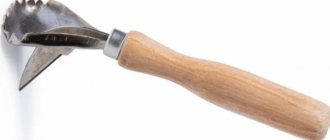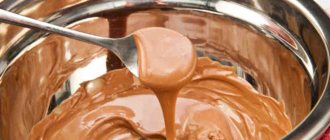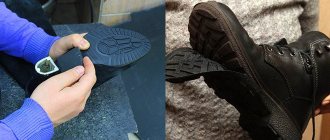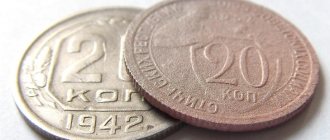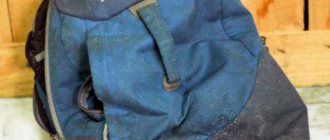Red, white or pink, fried, salted or steamed - trout tastes great in almost any form. But not all housewives have enough necessary experience and knowledge on how to cut trout correctly. Therefore, below there are detailed instructions for different situations and suggested methods of preparing fish.
How do you prefer to cook trout?
- Bake 77%, 1994 votes
1994 votes 77%1994 votes - 77% of all votes
- Grilled 12%, 297 votes
297 votes 12%
297 votes - 12% of all votes
- Fry 6%, 143 votes
143 votes 6%
143 votes - 6% of all votes
- For a couple 3%, 86 votes
86 votes 3%
86 votes - 3% of all votes
- Extinguish 2%, 58 votes
58 votes 2%
58 votes - 2% of all votes
Total votes: 2578
15.12.2019
- Bake 77%, 1994 votes
1994 votes 77%1994 votes - 77% of all votes
- Grilled 12%, 297 votes
297 votes 12%
297 votes - 12% of all votes
- Fry 6%, 143 votes
143 votes 6%
143 votes - 6% of all votes
- For a couple 3%, 86 votes
86 votes 3%
86 votes - 3% of all votes
- Extinguish 2%, 58 votes
58 votes 2%
58 votes - 2% of all votes
Total votes: 2578
15.12.2019
×
You or from your IP have already voted.
For pickling
This seafood is a good option for salting. It is possible to brine both a freshly caught and a frozen carcass, the outcome is identical. Housewives initially freeze the fish because it becomes pleasantly tender.
It is advisable to buy whole trout before cutting them at a retail outlet:
- the trout should look freshly caught in appearance;
- when the tail part is dry, the tip is rounded - it means seafood, it has been lying around for a long time;
- the scaly layer is intact, without damage - but when present, this is a consequence of improper transportation;
- the trout itself and its meat are elastic, after pressing there are no holes left for us and no liquid appears;
- the veins are light in color, and the meat has a pleasant, delicate color.
The eyes should be clear, not cloudy. It is advisable to buy such seafood from reliable retail outlets. Large hypermarkets with a wide range and systematic delivery of products.
pixabay.com
If you bought a whole carcass for salting, you will need to cut it up:
- Wash the trout, carefully remove all fins.
- Remove the scaly layer. For quick processing, you need to place the carcass under running hot water for a while.
- Remove the lower part, cut off the head, remove the gills. Carefully cut out the fatty underbelly, and prepare a tender and aromatic fish soup from it.
- Cut the fish, following along the back, at the same time removing the spine and all the ribs.
pixabay.com
Useful properties of trout
Trout meat is loved not only for its delicate taste, but also for its actual benefits. Fish of the salmon family are a source of healthy fatty acids, macro- and microelements. Vitamins obtained from them have a positive effect on blood vessels, blood circulation and brain function. Easily digestible fats and high-value proteins reduce the risk of depressed mood, regulate blood pressure, improve skin condition, maintain hemoglobin and improve sexual function. In addition, sea fish by-product contains iodine, which strengthens the immune system, nourishes the thyroid gland, and fights vascular diseases.
On your ear
This seafood is delicious in any form. For fish soup, it is possible to use only the backbone, heads and lower parts, cutting them off from the trout after removing the scaly layer. The gills need to be removed from the head, because a lot of dirt accumulates in them, and the taste and smell of the organs can spoil the ear. All remaining parts of the head can be eaten and can be easily chewed after boiling.
It is still possible to cut off belly strips from trout for soup, but usually they are left. Regular steaks are prepared from gutted fish. Here this seafood with skin and without a head is cut crosswise with a knife.
Steaks can also be cut crosswise from a whole fillet into wide strips. This way the fillet pieces will be boneless. If there are rib bones left on the meat, it is easy to remove them by hooking them together with the film in the abdomen with a thin, sharp knife. Next, if desired, you can separate a piece of fillet from the skin.
Cutting whole trout for fish soup and steaks
Fried or baked steaks and trout soup will please even those who don’t really like fish dishes. And all thanks to the delicate taste and proper cutting.
- Cut out the gills. They serve as a kind of filters and collect large amounts of dirt and toxins.
- We cut off the head along with the fins at a right angle with a sharp knife. The length of the knife should ideally be slightly greater than the width of the fish.
- First, we cut the head: along the small remainder of the ridge, we cut the head 5-6 cm in length, open it with our fingers and make another cut from the nose to the ridge from the inside.
- Lay out the trout carcass on the board and cut pieces 2 fingers wide or 3-4 cm wide at right angles.
- We do not peel the skin.
How to cut trout, salmon or salmon into steaks and fish soup - video
For fillet
Once the previous steps have been successfully completed, it is possible to separate the meat from the bone. This process is also carried out as needed and depends on the size of the trout.
If the carcass is small in size, then initially it is necessary to remove the skin from it, then remove the bones. To clean the carcass from the skin, you need to remove it, like a stocking, starting from the head. After removing the skin, you can begin to separate the fillets. More often it is simply cut, starting from the ridge, making an incision along the back, then pushing the knife under the ribs, trying not to cut them. Then you need to cut the fillet from the tail. As a result, you will get 2 parts, one of which is finished fillet meat, and the second with the spine. With the second half you need to repeat the manipulation.
It will not be possible to remove the skin from a large carcass with a stocking, because of this, it is first necessary to cut the fillet from the bones. After there are two fillets with skin, the latter must be removed. Here you will need a sharp knife, preferably its blade is longer than the width of the carcass. You should place the fish skin-side on a board and slowly cut the fillet from the skin, controlling the procedure so that there is not a lot of meat left on the skin.
pixabay.com
What kind of fish is trout?
Trout loves clean, oxygen-rich water
Char, mykiss, brown trout, Clark's salmon, golden trout, rainbow - these are all names for trout. This fish belongs to the salmon family, lives in salt and fresh water, and can be reared under artificial conditions. Trout lives in lakes, streams, and rivers, preferring mountain ones with cool and clean water. Fish are very sensitive to the cleanliness of their environment; when contaminants enter the water, they are one of the first to die.
Trout comes in a variety of colors
The color of trout is surprisingly variable and depends on the habitat, food and time of year. The back is usually greenish, the sides are yellowish-green, with chaotically scattered round spots, the belly is whitish-gray. The skin is covered with small scales; the muzzle is blunt. Males can be distinguished by their larger heads and smaller sizes compared to females. The weight of trout can reach up to 20 kg, but fish measuring 20-30 cm and weighing up to 1 kg are more common.
The color of the meat is also different: white, yellowish, pink. River trout have a paler flesh color than sea trout. The benefits are due to the vitamins A, group B, E, D contained in meat, essential fatty acids Omega 3, amino acids and microelements that regulate cholesterol levels, strengthen the nervous system and heart, prevent the development of cancer, help normalize blood pressure, and have a beneficial effect on skin and hair. .
Despite the fact that the meat is quite fatty, its calorie content is only 88 kcal per 100 grams, which makes it a dietary product.
Important! Trout meat is not recommended for pregnant women and children. It may contain a small amount of mercury, which is safe for an adult, but dangerous for a child.
From scales
This seafood is covered with a slimy layer, so before you start cleaning, it should be rinsed. To prevent the trout from slipping out of your hands, it is advisable to rub it with coarse salt. To clean and cut trout, you will need the following tools:
- tablet;
- sharp knife;
- gloves;
- metal grater for dishes;
- tea spoon.
Many fishermen first remove the entrails of the seafood. This is done with a knife, cutting the abdominal cavity from the tail to the top. Next, the giblets are removed and the films are removed. Use a spoon to remove the blood. The gills are removed because they contain harmful substances. If the head is not required, it can be removed and discarded. When caviar is found, it is salted. All side fins are cut off, and those on the ridge are completely removed.
Some housewives wonder whether it is necessary to clean fish from scales. This needs to be done. A serrated knife or a dish grater will do. The scaly layer should be cleaned very carefully so as not to spoil the skin, from the bottom to the head. Can be cleaned in water or in a bag. This way the scales don't scatter all over the kitchen. The skin on the belly is lighter, so the main thing is not to miss the scales. Their presence can be checked with your finger. If you find scales in a cooked dish, it’s quite unpleasant, that’s why you need to clean them. Next, you need to rinse the trout and start cooking.
How to properly clean fresh trout?
If the fish is freshly caught, then its body is covered with mucus. The carcass must be rubbed with salt so that it does not slip out of your hands, and rinsed thoroughly with running water. After cleaning the mucus, the carcass must be dried (you can blot it with paper towels).
After this, prepare for cleaning sharp knives, cutting scissors and a board, containers for caviar (it is salted), milk (they can be fried) and waste.
Knife with a short handle
To prevent the scales from scattering in all directions when cleaning with a kitchen knife with a short handle, the fish can be kept in water by placing it in a sink or basin. The carcass should be held by the tail while cleaning. The process should be carried out without haste, making small movements in the direction from the tail to the head. The scales of a trout are easily separated from the skin, but they “sit” more firmly on the belly. You can wash off the peeled scales from time to time to see the places where they still remain (identify by their shine). You may need another tool to continue the process.
Fish scaler
Many housewives find it more familiar and easier to use special tools - homemade or store-bought fish scalers. The algorithm of actions is the same: as with a knife, we completely clean off the scales; you need to clean the trout from scales from tail to head. A fish scaler can also be used to clean those places where the scales do not yield to the knife (for example, on the abdomen). This will help maintain the integrity of the skin.
Fishing knife
If you have a fishing knife on the farm, then using the same technique it is more convenient to carry out the process with its help. This knife also has a short handle, but combines several tools. It is intended not only for cutting and gutting fish, but also for other operations that may need to be carried out far from civilization while fishing. The narrow blade of the knife is sharp and helps to cut rope, fishing line, branches for fishing rods, and open cans.
After cleaning the scales, a fishing knife with a thin and long blade is used to gut the fish and separate the fillet from the backbone. The blade may also have serrations, which will make the cleaning process easier and allow you to file down large bones.
Gutting
Usually such fish are sold already gutted. There are also whole trout, in which case they need to be gutted. It is no more difficult to process such a product from giblets than any other.
It is necessary to cut the belly along the body along the entire length of the fish. Having expanded the edges, it is necessary to pull out all the internal organs. If there is caviar in the abdominal cavity, it can be salted, everything else should be thrown out. It is also necessary to remove the films that cover the abdomen.
If you need a whole trout, you need to remove the gills from the head. They contain many harmful substances for the human body and will definitely spoil the dish with an unpleasant aroma and taste. If the dish does not require a whole fish, then the head is cut off and thrown away.
Some dishes require the presence of fins for beautiful presentation, otherwise it is also advisable to cut them off. The side fins are simply removed; the spinal fin needs to be cut out by making cuts on both sides.
There is also a Chinese method of cutting. This is a rather unusual, but effective option. An incision is made with a knife across the belly of the fin. You need to put Chinese chopsticks into the trout's open mouth. You will need to insert one stick deep so that it passes over the gills, which are pressed, and the stick is inserted into the hypobranchial opening.
Then they are pushed through to the incision on the abdomen. Similar manipulations are performed with the 2nd stick. The ends on the head side are clamped and twisted like a corkscrew a couple of times. Afterwards, the giblets with gills are carefully pulled out. Wash the fish with water and start cooking.
What should trout steaks be like?
Trout can also be fried into fillet portions, after cleaning the trout and cutting the carcass as indicated above. If you want to cook steaks, it is better to leave the bones and skin.
Source: @rakovar_yar
They will retain the shape of the fish and add flavor. The thickness of cutting trout for steak is at least three centimeters. Otherwise the steaks will not be juicy.
Processing frozen fish
Frozen fish is much easier to cut than freshly caught fish. Therefore, most housewives prefer to put newly purchased seafood in the freezer and start cutting it only after a couple of hours.
Procedure for preparing frozen trout:
- The seafood is taken out of the freezer and transferred to a deep container with ice water. The main thing to remember is that it is not recommended to defrost trout or fillets in warm or hot water.
- After about 15 min. start cleaning the fish. It is rubbed with coarse salt so that it does not slip on the cutting board.
- At the initial stage, the scaly layer is cleaned off. Because it is chained with ice crystals, processing is quite simple and quick.
- Next, the fish is cleaned using one of the following methods (depending on the dish that will be prepared from the trout).
Having figured out how to properly gut and clean such fish, this task will no longer be a burden.
There won't be a lot of time wasted. And the prepared trout culinary masterpieces will delight your loved ones with their taste and aroma. Did you like the recipe?
How to clean frozen fish
The trout sold in the store is no less valuable. Before choosing trout in a store, you should carefully inspect it. The freshness of frozen products is difficult to determine by the gills, but when examining, you need to pay attention to the body of the carcass: there should be no yellow spots of old fat or cuts on the belly.
The rest of the processing follows the same scheme as described above. Some processes are even easier. For example, it is easier to remove the skin from frozen fish with a stocking, and the scales are separated better. Experienced housewives often use this property and lightly freeze small fish before cutting.
To cut fish into steaks or fillet it, you need to let it thaw slightly first. To speed up the process, you can use cold water.
Trout cleaning methods
The trout cleaning method is chosen depending on the nature of the dish being prepared. Therefore, the order of cutting the fish may be changed and some stages may be lost. Eg:
- Depending on the manufacturing method, the size of the fish is selected.
- Trout is prepared in a number of ways.
- It is possible in a frying pan.
- Trout makes a very tasty and necessary fish soup.
- Trout can be stuffed with different contents.
- Baked trout, cream may be used.
Roasting trout completely
To bake fish completely, choose fish carcasses of a certain size. The main thing is that it fits on the baking dish. Along with this, do not forget that the larger the fish carcass, the longer it will need to be cooked.
First of all, wash the fish to remove mucus. In most cases, it is unlikely that you will be able to do this in one go. If you use salt, it is possible to solve the problem of retaining fish. Trout can be cleaned in one or the other direction
Particular attention should be paid to cleaning the belly of the fish. The scales here are smaller, but also more durable than on other parts of the body.
If you do not thoroughly clean the belly, you may break the dish. It is not necessary to cut off the trout's head, just remove the gills. At the end, carefully rinse the fish again. Then it needs to be dried with paper towels. Trout is prepared either in the oven or in a slow cooker, depending on the recipe.
Gutting fish
This stage of cutting fish is present, regardless of the production method. Moreover, it is possible to do this yourself. To do this, you need to cut the belly of the fish, starting from the anal fin to the gills themselves. Then, you need to take out everything that is in the belly. The film can also be removed. If this is not done, then it is possible to take a dish with bitterness.
Some cleaning tips
If you follow some rules, the process will not be burdensome. Eg:
It is better to clean fish in a sink. This will protect the kitchen from unnecessary dirt and save time on cleaning and cleaning. For cleaning fish, a knife with a small handle, but rather sharp, is more suitable. If there is no washing option, it is better to cut the fish on a cutting board
Along with this, it is extremely important that the fish cutting board is not used for the production of other food products, except for the production of meat. This is especially true when bread, cheese, sausages, etc. are being cut on a cutting board. If you need to put fish in the freezer, make sure that there is as little liquid on it as possible. Fish must be cleaned and cut immediately upon completion of purchase.
While it is completely defrosted, this technological process will take much longer.
Skinning trout and removing bones
Some manufacturing methods do not require the removal of bones and skin, but if this is necessary, then:
- Once the fish is cleaned and gutted, only then do they begin to remove the skin and bones. Along with this, the fish must be clean.
- The head, tail and fins are also removed.
- Removal of the ridge with bones is carried out through a longitudinal incision made on the back of the fish.
Not a huge tip: in order to remove the backbone with bones, you need to make a deep cut in order to divide the fish carcass into two parts. This is the only way to get rid of bones without trouble.
It is fundamentally important: the knife must pass close to the vertebrae of the fish and follow a sliding path. Along with this, it is necessary to control the position of the knife
The knife should go at an angle, towards the abdomen. This process requires holding the fish carcass motionless.
- The remaining bones are then removed. They are easy to find if you run your finger across the meat. They are removed using tweezers or nail scissors.
- To remove the skin from the meat, first make an incision, after which, holding the fish, the meat is cut off from the skin. Along with this, you should also control the position of the knife. It should be at an angle to the table, or rather, at an angle to the skin. This is the only way to properly separate the meat from the skin.
- Such actions are necessary when you need to prepare salad and rolls, and those dishes that require small pieces of meat.
When cutting up trout, be sure not to forget that from such parts of the fish as the ridge, head, tail and fins you can actually cook the most delicious and necessary fish soup.
Features of preparing fish for cooking various dishes
The fish is prepared taking into account the recommendations in each recipe. To prepare aspic or fish soup, the scales must be cleaned off. If the tench is fried or baked, then there is no need for a cleaning procedure. The following features can also be highlighted:
- medium-sized fish can be used for both boiling and frying, cut into pieces after gutting and removing the scales;
- rib bones are not removed from a line intended for cooking. But they must be cut from the carcasses for frying or baking.
- In order to obtain a dish with an exquisite aroma as a result of baking the whole fish, the belly is stuffed with dill;
- The cut small lines are washed and cut into two parts along the ridge. The tail and head are removed, the bones are selected and cut into pieces.
Processing “royal fish” does not require much time. But the final result is worth all the effort.
Roasting a whole carcass
If the fish is small and you want to bake or fry it whole, then we assure you that you can clean it in just 5 minutes. The thing is that trout scales are not like the scales of carp or perch and are very small plates that can be cleaned off the fish without much physical effort.
- So, first you need to rinse the fish in running water. If the trout is very slimy and such a carcass is uncomfortable to hold in your hands, then even repeated washing is unlikely to help you. It's better to just sprinkle salt on the fish to create friction: you'll still have to salt it later anyway.
- It is best to clean trout directly in the sink: due to the fact that the scales do not adhere firmly to the skin, they practically do not scatter around the kitchen, but if something gets on the cabinets, table or floor, then perhaps you simply will not notice the contamination. The walls of the sink will save you from such a nuisance, and collection at the drain will allow you to collect all the large scales and prevent the water supply from clogging.
- It is convenient to clean trout with a small knife both against and in the direction of the scales. You need to be especially careful in the abdomen area: the skin color there is lighter and the scales are noticeably worse, but at the same time they are tougher there than on the sides. Run your finger along the belly from head to tail to make sure the meal isn't ruined by crunching on your teeth.
- If the fish is not gutted, it is not so difficult to do it yourself: cut the abdomen from the anal fin to the gills and take out all the insides. If you find caviar, you can salt it, but feel free to throw everything else in the trash.
- There is no need to cut off the head: it is enough to remove the gills so that the dish does not acquire the wrong taste. In addition, the gills, like a filter, collect not the most useful substances, so it is advisable to remove them if you care about your health.
- Rinse the fish again, and that’s it – you’re ready to bake!
You don’t have to touch the fins and tail: it’s not for nothing that in many cafes they are left with the fish for the beauty of presentation.
Fresh fish eye color
- pike perch fillet – 1.5 kg;
- butter – 150 g;
- rosemary – 6 stems;
- vegetable oil for frying – 100 ml;
- garlic – 6 cloves;
- leeks - 6 stalks;
- chicken broth – 100 ml
- salt to taste;
- ground black pepper.
Hi all! The section “Life hacks for fishing” continues its work. Any fish can be cleaned in just 1 minute! Just imagine that 2-3 kg of fish is cleared of scales in less than 5 minutes!
How to remove fillet
The skin of the trout is first removed, then the bones are removed. The skin must be removed from the head like a stocking. An incision is made on the back, the meat is separated from the ridge, helping with a knife. You will get two halves, one of them will have a spine. The procedure should be repeated with her.
If the fish is large, then removing the skin with a stocking will not work. The meat must be separated from the bones. When two halves with skin are obtained, the fillet is placed skin side down and carefully separated from the skin with a knife, holding the place at the tail.
Frozen trout is skinned before thawing. This is much easier to do: pour boiling water over the fish, pick up the edge of the skin with pliers, pull and remove with a stocking. Then defrost and cut as usual
Helpers for removing scales
6. The scales of eel, catfish and burbot are almost invisible and very small. You can get rid of it using the stocking method, but do not forget to wash off the mucus from the catfish first.
Expert opinion
Ekaterina Korneva, expert in the field of care, cleanliness and beauty
I will help you understand all the intricacies.
Signs of stale fish can appear both during the gutting process and when cutting a fish carcass into fillets or cutting into portions into steaks. I won’t insist, but it seems that spices are added to Matias, if it does not fall apart and does not have an unpleasant odor, and the expiration date and storage conditions are met, then it can be consumed. How to properly prepare for stuffing If you have any questions, please contact me, I will be happy to answer!
Caviar separation process
It is also necessary to separate the caviar from the film. You need to get the caviar, prepare a glass of hot water, about fifty degrees, salt, and a bowl.
In a bowl, mix hot water with a tablespoon of salt and stir until the salt dissolves. Now you can take the caviar and put it in a container with a salty solution for about thirty minutes. After half an hour, you need to put the caviar in a colander and let the water drain. After this, separate the film (it comes off easily).
Frozen version
Before you decide to cut frozen trout, you need to wear gloves with metal wire to avoid frostbite on your hands.
After freezing, trout does not need to be defrosted. Trim all fins with scissors. This may take about ten minutes. After getting rid of the fins, move on to the tail. Cut it off too. Afterwards, you need to turn the fish on its back. You should move to the stomach. Using scissors you need to crawl through the cut tail under the skin. From the belly you need to move behind the fins. Next, go around the fin and crash into it. Also keep cutting.
Afterwards, turn it over and start cutting the back, penetrating under the skin, and not under the scales. Along the back to the head. Next, use scissors to go around the lower fin and cut into it. You can continue with any knife. The knife blade must be kept strictly away from you. They should get under the skin, trim it and pull it towards themselves, wrapping it around the knife. Having reached the head, cut off with scissors. It is necessary to do the same on the other side. Next, move on to the stomach. Rip it off with a knife to the head.
This way you can remove the scales. Cut the head at an angle on both sides. And start tearing it off. Using scissors, rip open the belly on both sides before starting to gut the trout from the inside. Rinse under cold water. Using a knife, turn and cut off the ribs. Unwrap and cut from the tail. Do the same with the second side.
Salting trout: recipe with sugar and salt
Salting trout at home with salt and sugar is as easy as shelling pears. The salting process takes no more than 1-2 days, the speed of salting depends on the thickness of the fish fillet. The peculiarity of our preparation is that we salt fresh fish using dry salting. This very simple method allows you to quickly salt it at home.
Ingredients for pickling (per 1 kg)
- Trout fillet – 1 kg;
- Coarse salt (you can also use ground salt No. 1) – 3 tbsp. l.;
- Sugar – 1 tbsp. l.;
- Black peppercorns – 5-6 peas;
- Spices - to taste;
- Bay leaf – 3-4 pcs.
How to salt trout with salt and sugar
- Pour a little salt and sugar into a bowl with a deep bottom (ratio - 3:1), put a fresh piece of fish on top (be sure to skin side down), and again sprinkle it with the brine mixture.
If you salt more than 1 kg, then the amount of sweet-salty mixture will have to be increased. Remember that per 1 kg of fish, ideally there are 4 tbsp. l. mixture, for 2 kg - 8 tbsp. l. etc.
- Sprinkle the fillet with lemon juice, cover it with bay leaves, and sprinkle with spices.
- Next, place the second piece of fish (skin side up), sprinkle it with a mixture of salt and sugar.
- Cover the trout with oppression and leave it warm for 2 hours. You can use a two- or three-liter jar of water as oppression.
- After a couple of hours, remove the oppression, cover the container with a lid/plate and put it in the refrigerator.
During salting, a brine is formed (salt and sugar will mix with the juice that the fish secretes), we do not drain it immediately. Only when the trout is salted do we drain the brine liquid and wipe the fish with a paper napkin, removing any remaining salting from it.
That's all - lightly salted, home-salted trout is ready to eat.
Salted trout at home is very tasty: 7 salting methods
How to pickle trout at home deliciously - for this you will need:
- • capacity;
- • spices;
- • salt;
- • sugar;
- • fish;
- • suitable recipe.
It is better to use a large non-metallic container, then the brine will not react to the material of the dishes.
How to pickle trout at home: a classic recipe
Experts advise starting with home pickling.
Ingredients:
- • pepper (need peas) – 10 pcs.;
- • fish fillet – 1 kg;
- • salt;
- • sugar;
- • laurel – 4 pcs.
Procedure:
- This recipe is considered a classic. The fillet obtained after cutting can be left in large sheets or cut into equal medium slices.
- Mix the spices. Pour part of the composition, covering the bottom of the container prepared for salting. Place 2 leaves with 4 peppercorns there.
- Place the fish on top, skin side down only. Sprinkle with the spice mixture, then place the second fillet, again skin side down.
- Add spices and place the remaining 2 bay leaves with 6 peas. Cover the dishes and take the fish to steep in the cold. Wait a day.
Before tasting, cut the appetizer, sprinkling the pieces with lemon juice.
